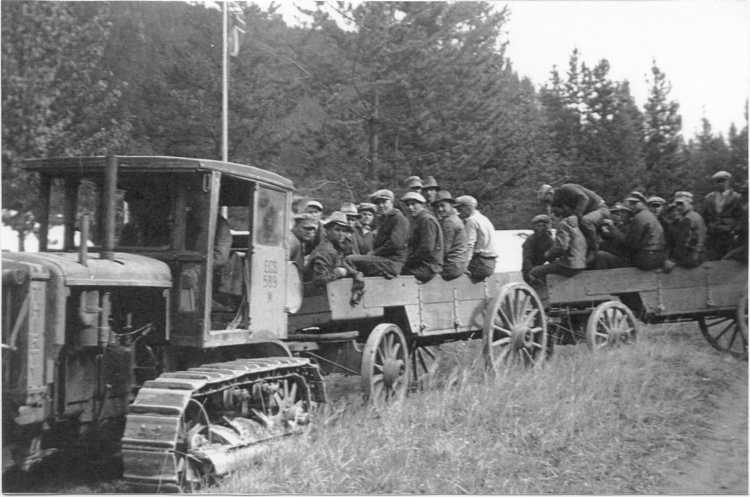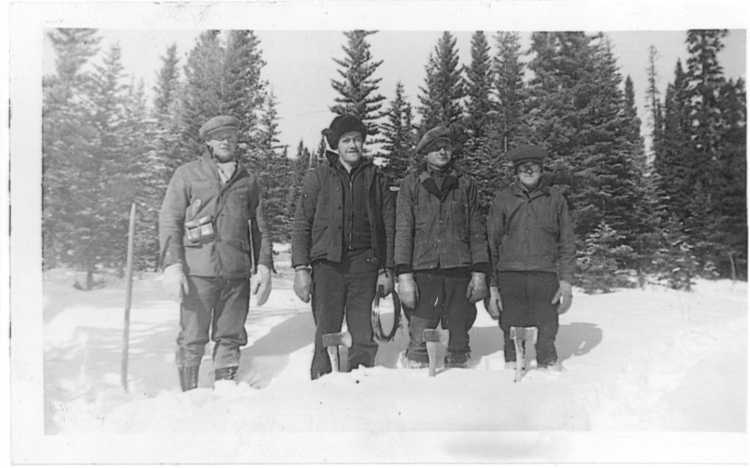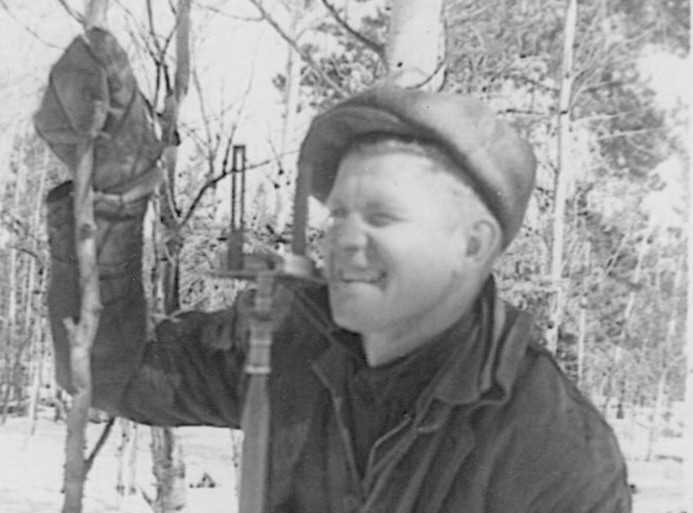Back to Work Page
In
the summer of 1941, the Canadian government published a little booklet
with a long name. It was called the Manual of Instruction for
Camps Providing Work for Mennonites and Conscientious Objectors
under the Alternative Service Work Camps. This manual covered
everything from the organization and establishment of camps to supervision
and discipline to religious services, recreation, and special training.
Without this manual, the alternative service work program would
have been chaotic and confused. It provided a broad structure and
plan for the conscientious objector.
Each
camp also needed a more specific plan. The manual could not anticipate
the different circumstances in each camp. Instead, it gave the camp
supervisors a general direction. A more detailed plan was needed
for day-to-day work. It would not have worked to just tell the COs
to spend 8 hours a day doing something useful. What would they have
done?
Surveyors
helped daily operations to run smoothly. Their job was to survey
the land beforehand so the workers would know where to work. Surveyors
were especially important in road building. In the Montreal River
camp, for example, the COs worked on the Trans Canada Highway. Surveyors
needed to take precise measurements of where the road would go before
the COs would start working.

Surveyors
also worked in the forestry camps. They helped ensure that the tree
planters did not miss any areas and did not plant too many trees
in one section.
S.D.
Ramer recalls the surveyors were also important when the COs were
logging.
“Our
work consisted mainly in cutting down and burning diseased pine
trees. Alfred High, Jim Greenwood, Ed Hoover, and another man
made up the surveyors' crew. About four or five miles [6 – 8 km]
down the highway the surveyors started up the side of the mountain
and put a stake every 100 feet [30 m], then descended, again putting
in a stake every hundred feet, creating numerous 100 square foot
blocks. Then a gang of four men easily spotted the diseased trees,
cut them down, and burned them. Even the bark from the stumps
was chopped off and burned.” [ASM, 201]
Erwin
Bartel worked on the same project, removing diseased trees.
“The
major work at our camp for the winter was to be clearing out bug-infested
trees on the mountainside in our area. At the right time in their
life cycle, these bugs would land on the trees at a certain height
from the ground, bore through the bark, then tunnel upwards laying
their eggs as they went along. In spring these eggs would develop
into larvae and would feed in a horizontal direction on the sap
carrying layer, cutting off the sap flow to the rest of the tree.
This tree would then die and become a fire hazard. Under a well-planned
method, survey groups were formed to mark the infested trees.
Other groups followed to cut down these marked trees along with
any dry trees and burn them. This was in wintertime and fires
could safely be started. Any of those trees that were along fire
trails or roads, were brought into camp for fire wood.” [ASM,
203-204]
 |
 |
 |
| Off to work at Camp Giekie in Jasper. |
Survey crew at Banff, Alberta. |
David T. Wall surveying at Banff National Park. |
Not
only did the surveyors help the men to work more efficiently, but
they also made the work much safer. By laying out blocks of land
for each crew to work, the surveyors allowed the men to work without
fear of another crew's tree falling on them. A little bit of advance
planning by the surveyors allowed all the men to work safely and
effectively.
Back to Work Page
|


